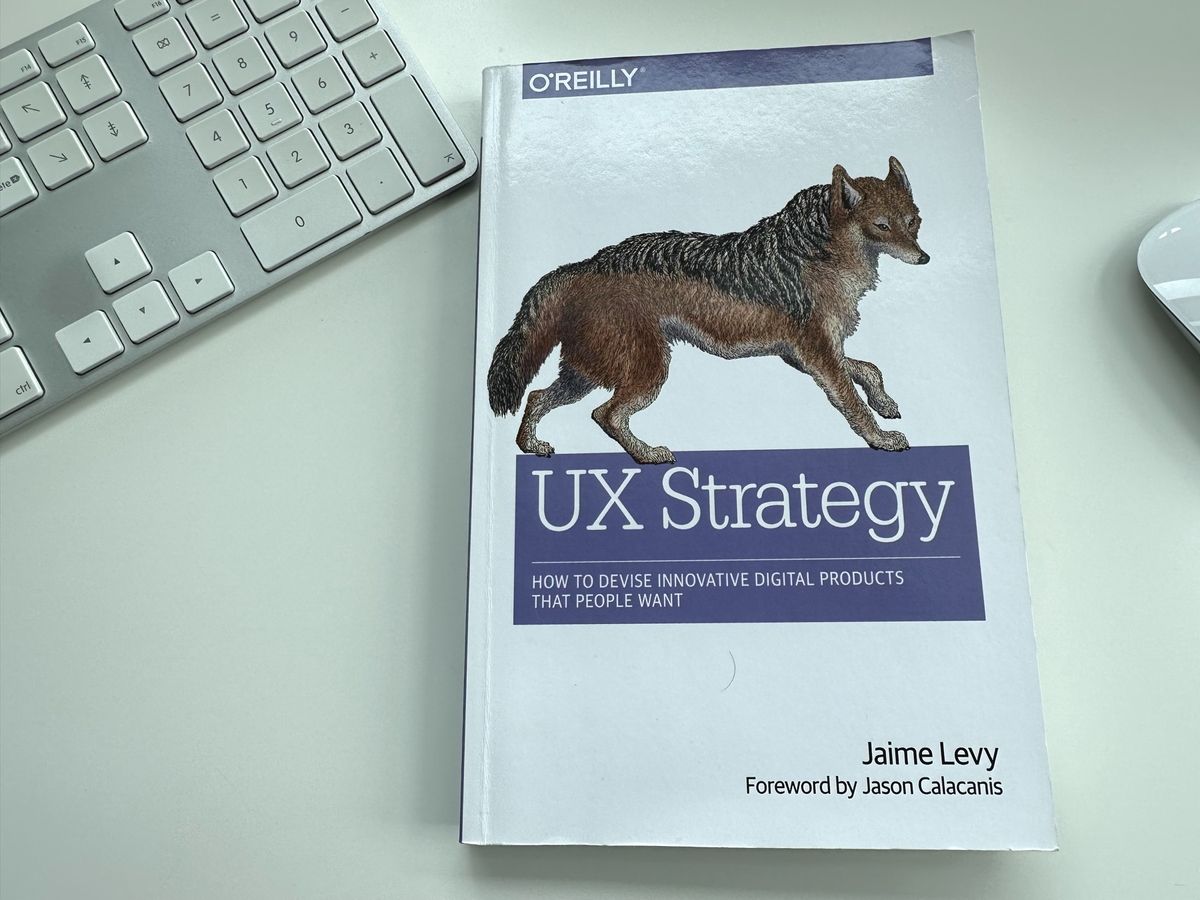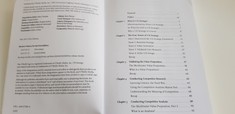Book Review: UX Strategy by Jaime Levy

UX Strategy: What the heck is it and should you care?
These are the first things you should ask yourself before even thinking about buying this book. For many of you (particularly the old time UXers – you know who you are 😉) you have already been doing UX Strategy for most of your career and simply classing it as part of your work as a UX Professional. It’s all the stuff we do that’s more focussed on the business side. Things like discovery research to explore current user behaviour and needs, competitor analysis, user journey mapping, personas, crafting value propositions, testing them, storyboarding, creating early designs/prototypes and testing them iteratively. Jaime references Eric Reiss’ book ‘The lean startup’ several times throughout her book and the approach detailed in her book is very much in line with lean UX and building MVPs.
In fact, one could argue whether UX Strategy is just another term that’s been created for something that already exists. However, as the definition of UX changes and moves closer to a design discipline, we need a means of people recognising strategy as a key skill. Ironically, as the UX discipline has exploded, key skills like strategy which would ordinarily be part of an experience designers role, are much harder to find. So if UX Strategy needs to be split out into another pillar of UX to increase awareness and skills, then so be it.
So, how does Jaime define UX Strategy?
UX strategy is the process that should be started first, before the design or development of a digital product begins. It’s the vision of a solution that needs to be validated with real potential customers to prove that it’s desired in the marketplace. Although UX design encompasses numerous details such as visual design, content messaging, and how easy it is for a user to accomplish a task, UX strategy is the “Big Picture”. It is the high-level plan to achieve one or more business goals under conditions of uncertainty.
In our opinion, a good UX Designer thinks about strategy as a natural part of their role – it’s what differentiates a UX Designer from a visual designer or a content designer. The UX Designer should always start with the bigger picture before any design takes place. Perhaps Jaime’s limited definition of UX Design is why she felt the need to write a book about UX Strategy – to increase awareness of these important UX skills.
Contents
- What Is UX Strategy?
- The Four Tenets of UX Strategy
- Validating the Value Proposition
- Conducting Competitive Research
- Conducting Competitive Analysis
- Storyboarding Value Innovation
- Creating Prototypes for Experiments
- Conducting Guerrilla User Research
- Designing for Conversion
- Strategists in the Wild
- Dénouement
Pros
This is a really interesting read and packed full of useful information and explanations. Jamie uses real examples as much as possible throughout the book and includes templates that you can download through her website too, which is really helpful for you to practise some of the tools in the book.
The book itself is really easy to read, detailed and practical – she breaks everything down into steps to follow. It also includes a lot of visual screenshots so you can really follow the key example she uses throughout the book (an Airbnb for weddings business) and practise the techniques for yourself. This is not a book full of waffle and theory!
You’ll come away with an understanding of the UX process for creating products, and will be able to use the tools to get started on the Strategy process.
Cons
We disagreed with several things within her book and at times too much was left open to interpretation. For example, with regards to user recruitment, she quickly references Nielsen’s 5 user recommendation, but most UX professionals now agree that this figure shouldn’t be used as a one and only rule. The reality is, it’s more complex and careful thought needs to be given to how many users are seen. If you are doing lots of quick iterations you could in theory go lower, or if you have lots of variables and are planning less iterative testing, you may need to go higher.
Jaime also advises guerrilla research in coffee shops, but her recruitment method takes 5-10 days to book people in which goes against many of the benefits of quick coffee shop research. This is a bit confusing – she may as well use a lab. There’s no mention of the hugely positive effects of multiple stakeholders observing the research (this can be a key part of UX Strategy). Her coffee shop approach enables just one client observer to be present, not to mention that the recordings can be incredibly poor (the audio in particular, due to all the background noise). If research is important to you, you will benefit from reading a more detailed book.
At the end of the book there are no references.
The graphics and illustrations look dated and aren’t particularly engaging.
Should you buy it?
If you’re new to UX, lack understanding of how UX fits into business or you want a high level overview of the whole process then this book will be useful for you to read. It would also be useful for anyone building digital products, such as business owners, entrepreneurs and product managers.
Note: All our reviews are independent, not sponsored and based only on our opinion
Share this post:

